The Proboscis Monkey: An In-Depth Look at a Unique Primate
The proboscis monkey (Nasalis larvatus), is a fascinating primate endemic to the island of Borneo. Instantly recognizable by their prominent, bulbous noses, these monkeys are a captivating example of natural selection and adaptation. Found primarily in mangrove forests and coastal areas, they are highly skilled swimmers and spend much of their lives in close proximity to water. This in-depth exploration will delve into the unique characteristics, behaviors, and challenges facing this endangered species.
Habitat and Distribution
The proboscis monkey (Nasalis larvatus) is endemic to the Southeast Asian island of Borneo, a landmass shared by Brunei, Indonesia, and Malaysia. These monkeys demonstrate a strong preference for coastal and lowland habitats, particularly those with close proximity to water. Mangrove forests, with their intricate network of waterways and abundance of food sources, represent a crucial habitat for proboscis monkeys. The tangled roots and branches of these forests provide excellent opportunities for both foraging and refuge from predators.
In addition to mangrove forests, proboscis monkeys can also be found in peat swamp forests, riparian forests, and lowland dipterocarp forests, though always within close range of rivers, estuaries, or other freshwater sources. This preference for water-adjacent areas is directly linked to their feeding ecology and escape strategies. The proboscis monkey’s range within Borneo is not uniform and is heavily influenced by the availability of suitable habitat.
Unfortunately, proboscis monkey populations have become increasingly fragmented due to extensive habitat loss driven by deforestation for logging, agricultural expansion (particularly oil palm plantations), and human settlement. This fragmentation has serious implications for the long-term survival of the species, as it isolates populations, reduces genetic diversity, and increases competition for resources and space. Conservation efforts are focusing on protecting remaining mangrove and riparian habitats, establishing wildlife corridors to connect fragmented populations, and mitigating human-wildlife conflict to ensure the long-term survival of this unique primate.
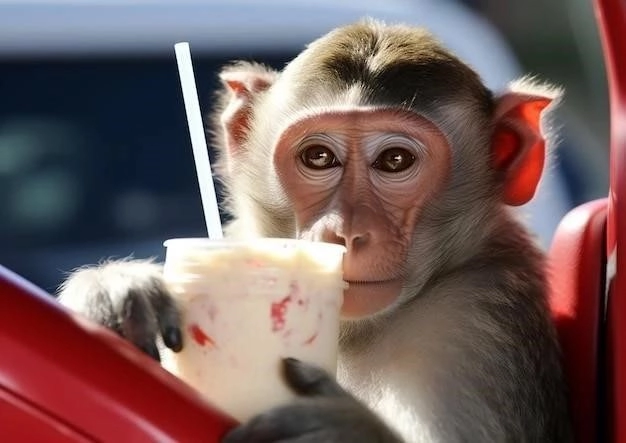
The Proboscis Monkey’s Distinctive Nose
The proboscis monkey’s most striking feature, the outlandishly large nose from which it derives its name, is a remarkable example of sexual dimorphism and evolutionary adaptation. This prominent feature, present in both sexes but significantly more pronounced in adult males, has been a source of much speculation and scientific inquiry.
In males, the nose can reach lengths of up to 7 centimeters, drooping down over the mouth and becoming even more engorged and pendulous when the monkey calls or becomes agitated. Females possess a much smaller, more upturned nose, while juveniles of both sexes are born with small, snub noses that gradually elongate with age. Several hypotheses attempt to explain the evolutionary function of the male’s extraordinary nasal appendage.
The most widely accepted theory posits that the large nose serves as a resonating chamber, amplifying the male’s calls and enhancing their volume and depth. These calls, ranging from loud honks to resonant brays, play a crucial role in communication, particularly during territorial disputes with rival males and in attracting mates. The nose’s size and shape may also contribute to visual signaling, serving as a visual cue of a male’s fitness and maturity to potential mates. A larger nose might indicate greater physical prowess, a stronger immune system, or superior genetic quality, making the male more attractive to females.
Further research is needed to fully unravel the mysteries of the proboscis monkey’s unique nasal appendage, but its role in vocalization, sexual selection, and interspecies communication is undeniable. It stands as a testament to the power of natural selection and a striking example of the often-bizarre adaptations that arise in the animal kingdom.
Dietary Habits and Adaptations
The proboscis monkey displays a predominantly herbivorous diet, exhibiting a marked preference for young leaves, shoots, and unripe fruits. This dietary specialization is closely intertwined with their unique physiological and behavioral adaptations. Their digestive system, characterized by a multi-chambered stomach similar to that found in ruminants, enables them to extract nutrients from a diet high in cellulose, a complex carbohydrate abundant in plant matter. This specialized digestive process involves the fermentation of food by symbiotic bacteria, breaking down otherwise indigestible cellulose into simpler compounds that can be absorbed and utilized by the monkey’s body.
Their diet fluctuates seasonally, influenced by the availability of different plant species within their habitat. During periods of fruit scarcity, they rely heavily on leaves, supplementing their intake with flowers, seeds, and occasionally insects or bark. This adaptability in their dietary preferences allows them to thrive in environments where food resources may be seasonally limited.
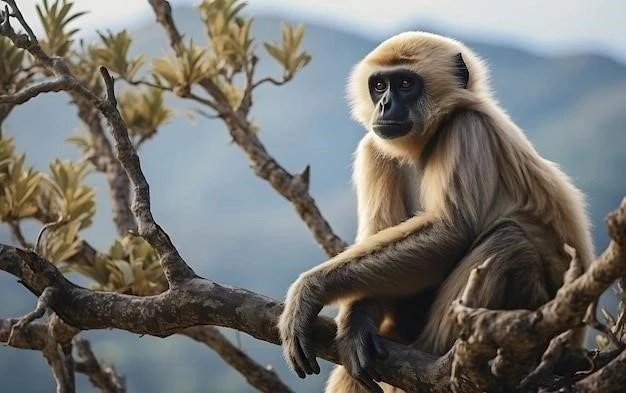
A remarkable adaptation linked to their diet is their pot-bellied appearance, a consequence of their enlarged stomachs and intestines required for efficient fermentation of plant material. This distinctive physique is a testament to their evolutionary adaptation to a folivorous diet, enabling them to extract maximum nutrition from their food sources.
Their foraging behavior is characterized by a high degree of selectivity, with individuals often investing considerable time smelling and inspecting leaves and fruits before consuming them. This selectivity minimizes the ingestion of potentially toxic compounds found in some plant species, further demonstrating their adaptation to their specialized diet.
Social Structure and Behavior
Proboscis monkeys exhibit a complex and fascinating social structure characterized by a hierarchical system within single-male and multi-male groups. These groups, typically comprising 10 to 30 individuals, consist of a dominant male, several adult females and their offspring, and occasionally subordinate, less dominant males. The dominant male, easily identifiable by his pronounced nose and commanding presence, plays a crucial role in maintaining group cohesion and defending the group’s territory from rivals.

Social interactions within these groups are multifaceted, involving a range of vocalizations, gestures, and physical contact. Grooming, an essential aspect of social bonding, serves to reinforce relationships and strengthen social hierarchy within the group. The dominant male often receives the most grooming, reaffirming his status within the social order.
Competition for resources, mates, and social standing can be fierce, particularly among males. Dominant males engage in elaborate displays of dominance, characterized by loud vocalizations, shaking branches, and physical confrontations, to assert their authority and ward off potential rivals. Subordinate males may attempt to challenge the dominant male’s position, leading to intense confrontations that can result in injuries or even death.
Females within the group also exhibit a social hierarchy, often influenced by age, reproductive status, and their relationship to the dominant male. Mothers are fiercely protective of their offspring and play a vital role in their early development, providing them with nourishment, warmth, and social guidance.
The proboscis monkey’s complex social structure is a testament to their intelligence and adaptability, reflecting the challenges and opportunities presented by their unique habitat and ecological niche. Further research into their social dynamics will undoubtedly continue to reveal fascinating insights into the lives of these remarkable primates.
Conservation Status and Threats
The proboscis monkey, listed as Endangered on the IUCN Red List of Threatened Species, faces a precarious future due to a multitude of interconnected threats. Their populations have experienced significant declines in recent decades, primarily attributed to the relentless destruction and fragmentation of their mangrove and riparian habitats.
Large-scale deforestation driven by logging operations, agricultural expansion (particularly for oil palm plantations), and human settlement encroaches upon their crucial habitat, reducing the availability of food sources, shelter, and breeding grounds. As their natural habitat dwindles, proboscis monkeys are forced into smaller, isolated pockets of forest, increasing competition for resources and making them more vulnerable to predation and disease outbreaks.
Beyond habitat loss, these monkeys also face pressure from hunting, both for subsistence purposes and the illegal wildlife trade. In some areas, they are targeted for their meat or for use in traditional medicine, further jeopardizing their already fragile populations.
The escalating human-wildlife conflict, exacerbated by habitat loss and human encroachment into their territories, poses an additional threat. As humans and proboscis monkeys are forced to compete for increasingly scarce resources, incidents of crop raiding and retaliatory killings escalate, creating a vicious cycle with detrimental consequences for both species.
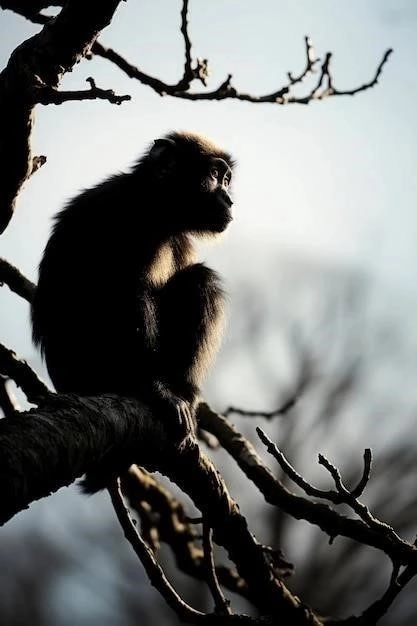
Addressing these multifaceted threats requires a comprehensive conservation strategy encompassing habitat protection and restoration, stringent anti-hunting enforcement, and community-based conservation initiatives that promote coexistence between humans and proboscis monkeys. The long-term survival of this iconic primate hinges on our collective commitment to mitigating the threats they face and ensuring the preservation of their unique evolutionary heritage for generations to come.
The Role of Mangrove Forests
Mangrove forests, often referred to as “forests of the tide,” play a vitally important role in the life cycle of the proboscis monkey, providing a rich and complex ecosystem crucial to their survival. These unique intertidal habitats, characterized by their salt tolerance and intricate root systems, offer a sanctuary for proboscis monkeys and a wealth of resources essential for their sustenance and well-being.
The dense tangle of mangrove roots and branches creates a multi-layered arboreal environment perfectly suited to the proboscis monkey’s lifestyle. These agile primates navigate this intricate network with ease, utilizing their strong limbs and grasping hands and feet to move swiftly through the canopy in search of food and shelter. The flooded forests provide refuge from terrestrial predators, while the abundance of food sources, particularly young leaves, shoots, and fruits, sustains their specialized herbivorous diet.
Mangrove forests also serve as important breeding grounds for proboscis monkeys. The dense vegetation provides cover for vulnerable infants and offers ample opportunities for social interactions and group cohesion. The availability of freshwater, often scarce in their coastal habitats, is another crucial factor contributing to the suitability of mangroves for proboscis monkey populations. These forests act as natural water filters, trapping sediment and reducing salinity, making freshwater sources more accessible to the monkeys.
However, the fate of the proboscis monkey is inextricably linked to the health and preservation of these vital mangrove ecosystems. Widespread deforestation and degradation of mangrove forests due to human activities pose a significant threat to the long-term survival of this endangered primate. Conservation efforts must prioritize the protection and restoration of these critical habitats to ensure the continued existence of the proboscis monkey and the myriad other species that depend on them.
Coexistence with Other Species
The proboscis monkey, a charismatic inhabitant of Borneo’s diverse ecosystems, shares its habitat with a fascinating array of other species, creating a complex web of ecological interactions. Within the mosaic of mangrove forests, peat swamps, and riparian habitats, these monkeys navigate a delicate balance of competition, predation, and symbiotic relationships with their fellow inhabitants.
Competition for resources, particularly food and space, is a constant factor in the lives of proboscis monkeys. They share their arboreal domain with other primate species, such as silvered langurs (Trachypithecus cristatus) and long-tailed macaques (Macaca fascicularis), leading to potential conflicts over access to prime feeding areas and sleeping sites. However, the different dietary preferences and foraging strategies of these species often allow for a degree of niche partitioning, reducing direct competition.
Predation, while not a constant threat, is a factor that influences proboscis monkey behavior and group dynamics. Large raptors, such as clouded leopards (Neofelis nebulosa) and python species, pose a potential danger, particularly to young and vulnerable individuals. The monkeys’ vigilance, alarm calls, and group cohesion serve as important anti-predator mechanisms, enhancing their collective survival in the face of such threats.
Proboscis monkeys also engage in mutually beneficial relationships with other species. Their foraging activities can inadvertently disperse seeds, contributing to the regeneration of the forest ecosystem. Furthermore, their presence attracts tourists and researchers, generating economic opportunities for local communities and raising awareness about the importance of conservation efforts.
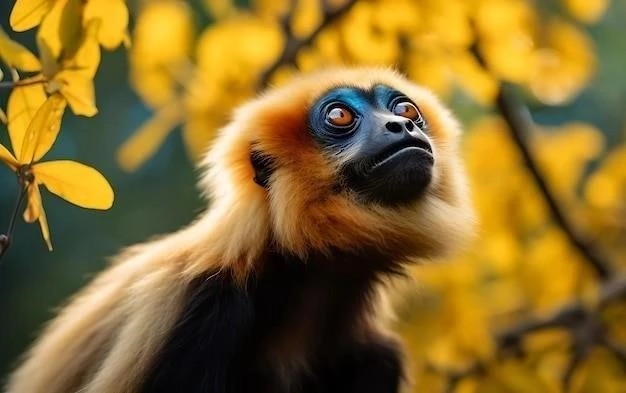
Physical Characteristics and Adaptations
The proboscis monkey (Nasalis larvatus) possesses a suite of distinctive physical characteristics and remarkable adaptations that enable it to thrive in its unique mangrove and riparian habitat. Their most prominent feature, the large, pendulous nose found in males, is a sexually dimorphic characteristic, with females possessing significantly smaller noses. This prominent nasal appendage is thought to play a role in vocalization, amplifying calls and enhancing their resonance, potentially attracting mates and intimidating rivals.
Beyond their remarkable noses, proboscis monkeys are characterized by their reddish-brown fur, which tends to be brighter on their heads and shoulders, gradually fading to a lighter shade on their limbs. Their long, slender limbs and dexterous hands and feet, equipped with opposable thumbs and big toes, make them adept climbers and agile navigators of the tangled mangrove forests. Their long tails, often exceeding their body length, provide balance and stability as they move through the trees, acting as a counterweight during leaps and acrobatic maneuvers.
One particularly noteworthy adaptation is their webbed feet, a characteristic unusual among primates, which enhances their swimming abilities. These webbed feet, combined with their powerful hind limbs, enable them to swim efficiently through flooded forests, cross rivers, and even dive underwater to escape predators or access submerged vegetation. This aquatic proficiency distinguishes them from many other primate species, further solidifying their connection to water-rich environments. Their digestive system, characterized by a multi-chambered stomach similar to that found in ruminants, represents a crucial adaptation to their herbivorous diet.
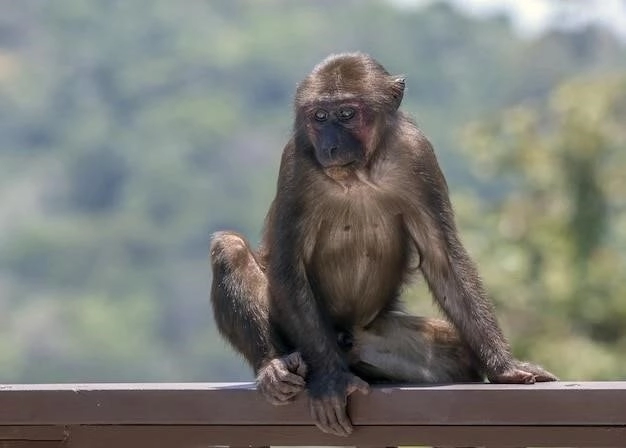
These physical adaptations, honed by natural selection over millennia, highlight the intricate relationship between the proboscis monkey and its environment, showcasing the remarkable diversity and adaptability of life on Earth.
Reproduction and Life Cycle
The reproductive biology and life cycle of the proboscis monkey (Nasalis larvatus) exhibit fascinating adaptations to their arboreal lifestyle and the ecological pressures of their mangrove and riparian habitats. Reproduction in these monkeys is closely tied to social dynamics, with breeding primarily occurring within established groups led by a dominant male.
Females reach sexual maturity around four to five years of age, while males typically mature later, at around six to seven years old. The dominant male within a group enjoys priority access to receptive females, increasing his chances of siring offspring. Females signal their receptivity through visual cues, such as swelling and changes in coloration of the genital area, and through olfactory signals.
Following a gestation period of approximately 166 days, females typically give birth to a single offspring, although twins have been observed on rare occasions. Newborn proboscis monkeys are born with a distinctive blue face and sparse, dark fur, which gradually lightens as they age. Mothers are highly protective of their infants, carrying them constantly for the first few months of life and nursing them for up to a year.
Infant mortality rates can be high, particularly during the first year of life, due to factors such as predation, disease, and accidental falls from trees. As young proboscis monkeys grow, they become increasingly independent, exploring their surroundings, interacting with other group members, and learning essential survival skills, such as foraging for food and navigating their complex habitat.

The Proboscis Monkey in Local Culture
The proboscis monkey, with its distinctive appearance and intriguing social behaviors, holds a unique place within the cultural traditions and folklore of the indigenous communities inhabiting Borneo. Revered for generations, this iconic primate has woven its way into local mythology, folklore, and everyday life, reflecting a deep-rooted connection between the people of Borneo and their natural environment.
In some traditional beliefs, the proboscis monkey is seen as a spirit animal, embodying wisdom, agility, and a connection to the watery realms. Their prominent noses, a source of much amusement and fascination, have inspired countless stories and legends, often portraying them as mischievous tricksters or wise elders. These tales, passed down through generations, often carry ecological significance, emphasizing the importance of respecting the forest and its inhabitants.
While the proboscis monkey is generally revered and protected by traditional customs, the pressures of modernization and habitat loss have, unfortunately, led to increased human-wildlife conflict in some areas. In regions where human populations encroach upon their dwindling habitat, incidents of crop raiding can lead to negative perceptions of the monkeys.
It is crucial to recognize and respect the cultural significance of the proboscis monkey while addressing the challenges of conservation in a way that is both culturally sensitive and ecologically sound. By working collaboratively with local communities, drawing upon traditional knowledge, and promoting sustainable practices, we can strive to ensure the long-term survival of this iconic species while honoring its enduring place in Bornean culture.










